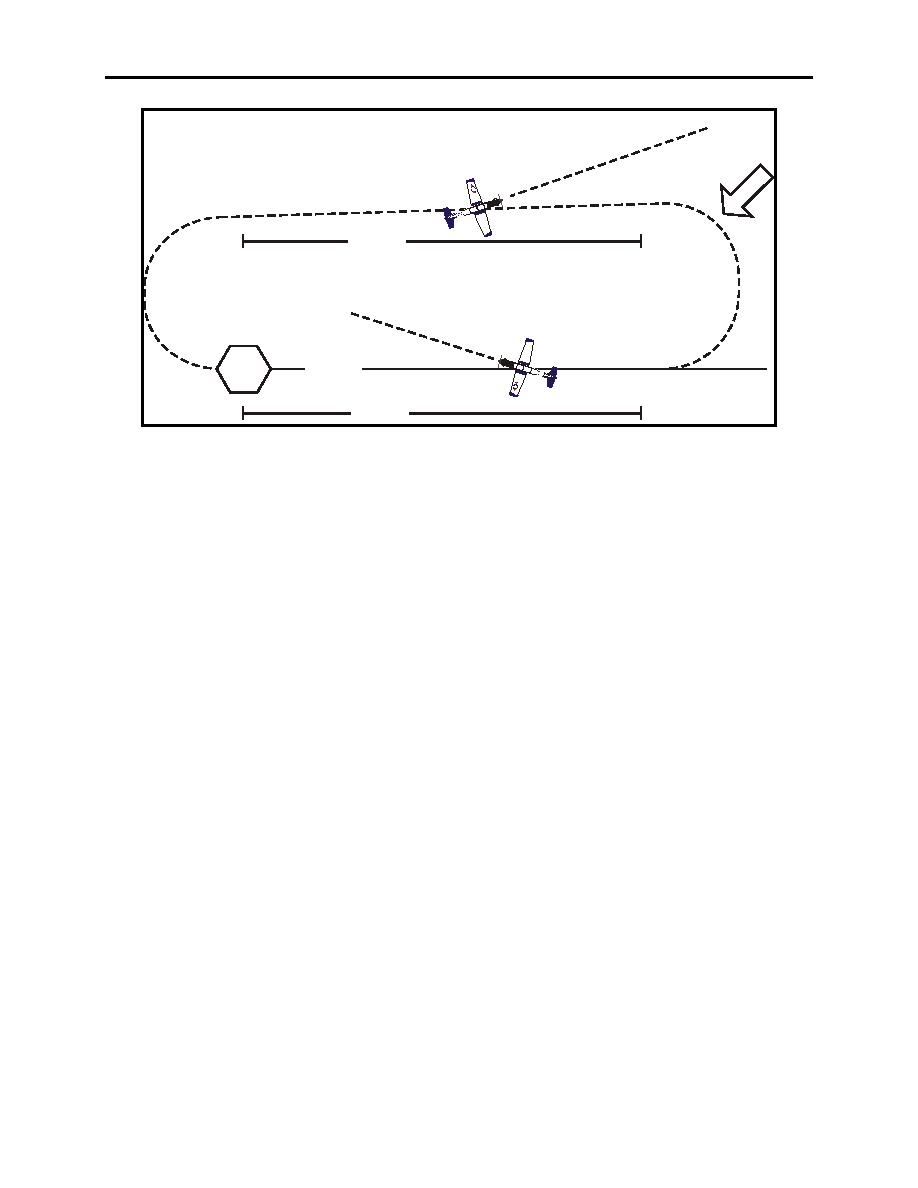 |
|||
|
|
|||
|
|
|||
| ||||||||||
|
|  CHAPTER FOUR
T-6A INSTRUMENT NAVIGATION
Heading
075
D
IN
W
70
Heading
278
090
60
Figure 4-17 Correction Orbit
NOTE
As has already been mentioned, wind is thought of as being from a
cardinal heading in holding. Figure 4-17 shows the wind must
actually be from the north east, since the inbound leg was 60
seconds. However, for ease in determining heading corrections, it
is best to think of winds as being from cardinal headings.
If the corrections determined in the no-wind orbit do not put you on course for 1 minute on the
first correction orbit inbound leg, you must re-correct the next outbound leg. The amount,
direction, and time to correct are determined exactly as in the no-wind orbit, but the corrections
must be applied to the heading and timing used on the previous outbound leg, not the first
outbound leg. It may take several orbits to get the heading and timing exactly right.
Confirm EFC time with Approach Control at least 5 minutes prior to the EFC. Receipt of EFC is
not a clearance to commence approach at that time unless you have lost communications with
ATC.
HOLDING DURING ADVERSE WIND CONDITIONS
It is not unusual for winds aloft to attain velocities well in excess of 20 KIAS. In these
circumstances, some modifications to the holding procedures discussed earlier may be necessary.
Just how much you modify normal holding procedures will, of course, depend on wind speed
and direction. If you feel you need to use modified procedures, be sure to discuss this with your
instructor.
You should be able to predict high winds prior to entering the holding pattern. Pay attention to
the forecast winds aloft. During the enroute phase, a high crosswind component would be
4-40 INSTRUMENT NAVIGATION
|
|
Privacy Statement - Press Release - Copyright Information. - Contact Us |